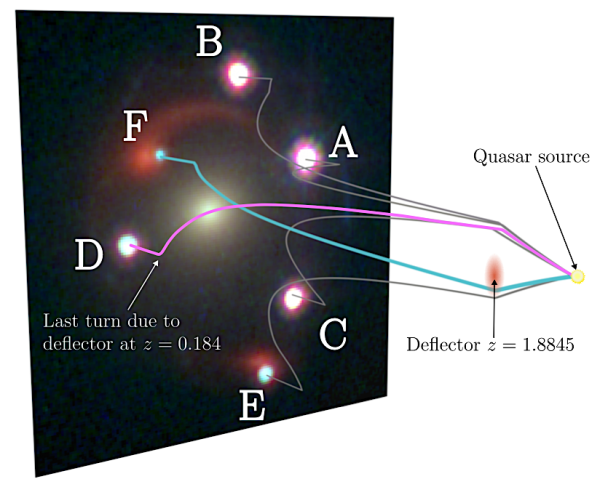Astronomers have just discovered the first known "Einstein zigzag."
Due to a rare, lucky cosmic alignment, the combined gravity of two galaxies bent light like spaghetti & split a distant quasar into six different images.
This six-part image could allow a very accurate measure of the expansion of the universe.
https://www.science.org/content/article/first-known-double-gravitational-lens-could-shed-light-universe-s-expansion #science #space #astronomy #physics
Due to a rare, lucky cosmic alignment, the combined gravity of two galaxies bent light like spaghetti & split a distant quasar into six different images.
This six-part image could allow a very accurate measure of the expansion of the universe.
https://www.science.org/content/article/first-known-double-gravitational-lens-could-shed-light-universe-s-expansion #science #space #astronomy #physics


Corey S Powell •
https://arxiv.org/abs/2411.04177
J1721+8842: The first Einstein zig-zag lens
arXiv.orgJennifer Ouellette hat dies geteilt